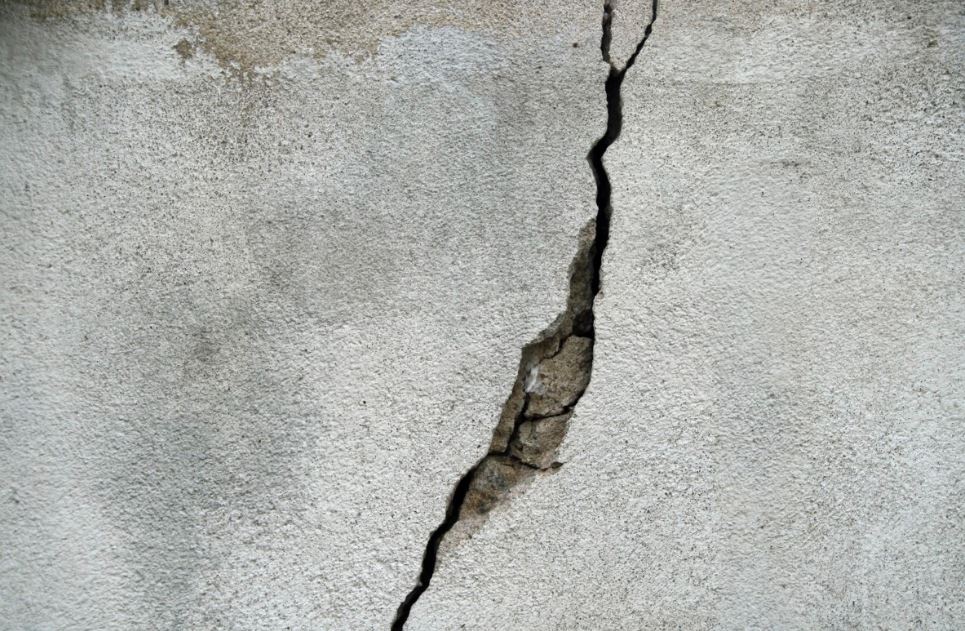The crumbling concrete that has closed schools over fears of collapse is also in hospitals and potentially millions of homes.
The problem of crumbling concrete has been known about for years. In 2018 an NHS boss called RAAC – reinforced autoclaved aerated concrete – a “ticking time bomb”.
However, the issue has hit the headlines after more than 100 schools were told yesterday to stay closed only days before the start of the new school year. The Guardian reports today (September 1) 1,000 schools could be affected.
With pupils and their parents’ lives thrown into chaos, schools have been scrambling to hire Portakabins for use as classrooms – which could be in situ for years. Others are looking to move pupils to other schools or return to online learning as used during lockdown.
RAAC is lightweight and has a limited lifespan, after which it deteriorates significantly. It has been described as an “Aero chocolate bar” by the former CEO of Queen Elizabeth Hospital, Caroline Shaw, who called its presence in NHS buildings a “ticking time bomb”.
Despite rising concerns about the integrity of NHS structures and potential collapses, the government said there are no further plans to review hospital buildings, reports the Telegraph. A spokesman for the department of health said technical advice received from the NHS shows the “current approach to monitoring and mitigation remains appropriate.”
Bosses at West Suffolk hospital has already sought legal advice about the risk of “corporate manslaughter” charges if patients were killed by a roof collapse. The hospital has installed 27 metal trusses to support RAAC planks.
NHS Scotland has identified 254 buildings that “have two or more characteristics which are consistent with the presence of RAAC”. In Wales, patients at Withybush Hospital in Haverfordwest were moved for their safety after the crumbling concrete was detected.
A National Audit Office (NAO) report states: “In recent years, the NHS has become aware of a serious issue with its buildings constructed from lightweight RAAC.”
Up to 41 NHS hospitals have “structurally unsound” RAAC – seven of which have the defective concrete “present throughout.”
“A number of hospitals still in operation today contain RAAC, including seven which have the material throughout.”
NHS chiefs have asked that these hospitals be prioritised due “to the risk to patients and staff” from the crumbling concrete.
While work has started in West Suffolk, it has not begun on the other worst affected hospitals – in West Yorkshire, Norfolk, Cambridgeshire, Cheshire and Surrey – with the government having previously stated that work would not commence until 2025-27. It has pledged to remove all RAAC from NHS estates by 2035.
Labour has already accused the government of failing to meet its manifesto pledge to build 40 new hospitals by 2030. Health secretary Steve Barclay announced in May that eight of the 40 would not be built this decade because they would be prioritising repair work on the worst affected hospitals.
The government said funding is available to “put in place necessary remediation and failsafe measures”
Fears about the presence of RAAC – which was widely used from the 1950s to the 1990s – in other buildings are also rising. Housing associations are concerned that council houses built in the 1950s have been overlooked by the review that revealed the problem of crumbling concrete in hospitals and schools.
“RAAC was widely used in the construction of social housing between the 1950s and 1990s [when 4.4 million homes were built] and, just as in school buildings and other structures, presents a serious risk for housing associations and their residents,” said construction and insurance law specialist Greg Carter.
“Unlike schools, no nationwide survey of social housing has been conducted and the extent of the problem is unknown.”




